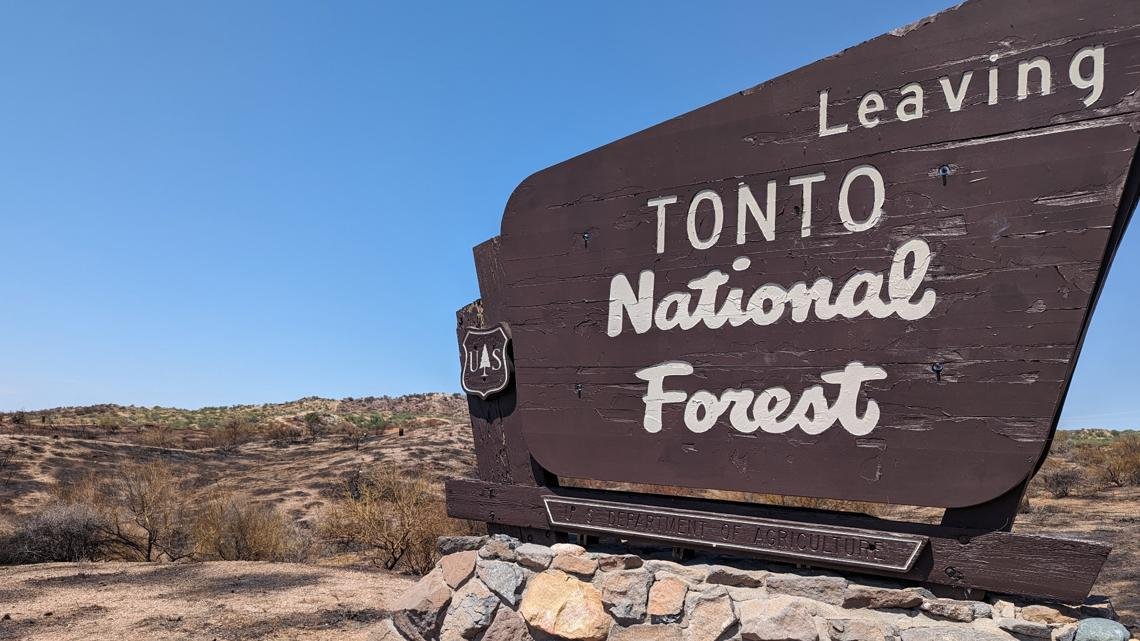climate-science
Why is the Drive to Bartlett Lake Such a Downer?

The Wildcat Fire left striking scars on the landscape near Bartlett Lake, but it’s just the start of what the Sonoran Desert will become.
PHOENIX — The drive to Bartlett Lake still smells like fire.
Stopping by the roadside, the scorched landscape reveals itself starkly. Grass is gone. Mesquite trees are reduced to charred clumps. Burnt Saguaro cacti stand in eerie silence, unaware they are dead until their internal water dries out.
Two months ago, the Wildcat Fire ravaged 14,402 acres of the Sonoran Desert. Nearby, the Sandstone Fire consumed 24,133 acres, while the Boulder View and Adams fires burned more than 8,000 acres combined.
Recovery will take years, but the resulting landscape will be fundamentally different from what it once was. Increased fire intensity necessitates new approaches in wildfire recovery.
Mary Lata, a fire ecologist, and Kelly Mott Lacroix, a hydrologist, are at the forefront of this effort. Both stationed at the Tonto National Forest, they work diligently to map out post-fire recovery strategies.
A majority of the Sonoran Desert is not adapted to frequent wildfires. Historically, low-intensity fires created speckled mosaics, leaving much of the desert untouched. Today, this is no longer the case.
Human activity has introduced non-native grasses like buffelgrass and red brome. These species grow thickly, providing continuous fuel for large fires that sweep across the landscape.
Grass fires release nutrients like nitrogen and potassium back into the soil, fostering more grass growth in a feedback loop.
Historically, desert fires were sparked by lightning during monsoons and rarely spread far. Now, human activity is the primary cause, igniting fires at the driest, hottest times of the day.
The Wildcat Fire, driven by these factors, shocked even experienced firefighters with its ferocity. It demonstrated just how quickly conditions can escalate.
Kelly Mott Lacroix recently returned from New Mexico, having guided burned area emergency response efforts. In Arizona, she immediately started assessing the Tonto National Forest’s burn areas.
Hot enough fires can alter the desert soil’s structure. Burned roots loosen the soil, hindering plant regrowth and increasing flood risk.
Fortunately, the Wildcat Fire left relatively few severely scorched areas, suggesting quicker recovery for some spots, Mott Lacroix noted.
The Forest Service plans to install more fencing and signage, giving the landscape time to rest through the monsoon season.
Fire scars pose not only safety risks but also economic burdens. Pollutants from burned areas increase water treatment costs for local communities.
Keeping vehicles off burned areas is crucial for recovery, Mott Lacroix emphasized. Less disturbance hastens healing.
State Route 87 showcases the landscape’s transformation. Cacti are replaced by grassy fields, a change that’s becoming increasingly common.
The Sonoran Desert, albeit young and dynamic, is not immune to these shifts. Despite the challenges, efforts to manage the desert’s future continue.
In November, Lata will join a conference to discuss management strategies for the desert’s ecological future.
The drive to Bartlett Lake may be disheartening now, but the desert will adapt. Recovery is a continuous process.
“The desert really is very different than it was,” Lata concluded. “And it’s not going to go back.”
>> Download the 12News app for the latest local breaking news straight to your phone.
12News on YouTube
Catch up on the latest news and stories on our 12News YouTube playlist here.


















